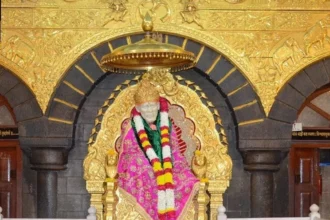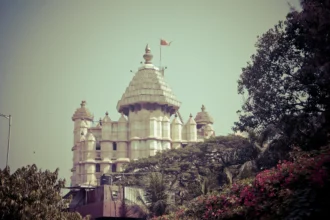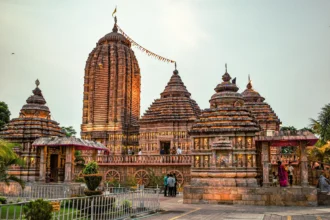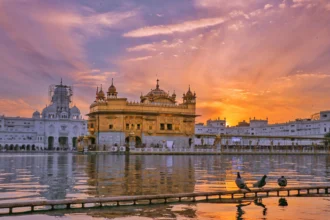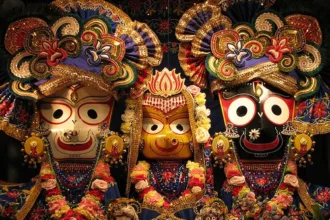Perched on the sacred seventh hill of the Seshachalam range in Andhra Pradesh, the Tirumala Venkateswara Temple, commonly called Tirupati Balaji Temple, is one of the world’s most visited spiritual destinations.
This ancient shrine attracts some 50,000–100,000 pilgrims daily, with festival seasons drawing over 500,000 visitors each day. These devotees come seeking divine grace, and find themselves immersed in a living tapestry of rituals, architecture, and timeless devotion.
Table of contents
- Ancient Origins & Living Legend
- Devotion & Traditions
- Secrets of the Tirupati Laddu: The Divine Prasadam
- Hidden Mysteries & Lesser-Known Wonders
- Celebrations & Festive Grandeur
- Practical Info: Timings, Dress Code & Etiquette
- How Rich is the Tirupati Balaji Temple?
- New Discoveries & Upcoming Developments
- Environmental & Social Initiatives
- Spiritual Fabric: As Devotion Evolves
- Final Reflection: The Voice of Govinda
Ancient Origins & Living Legend
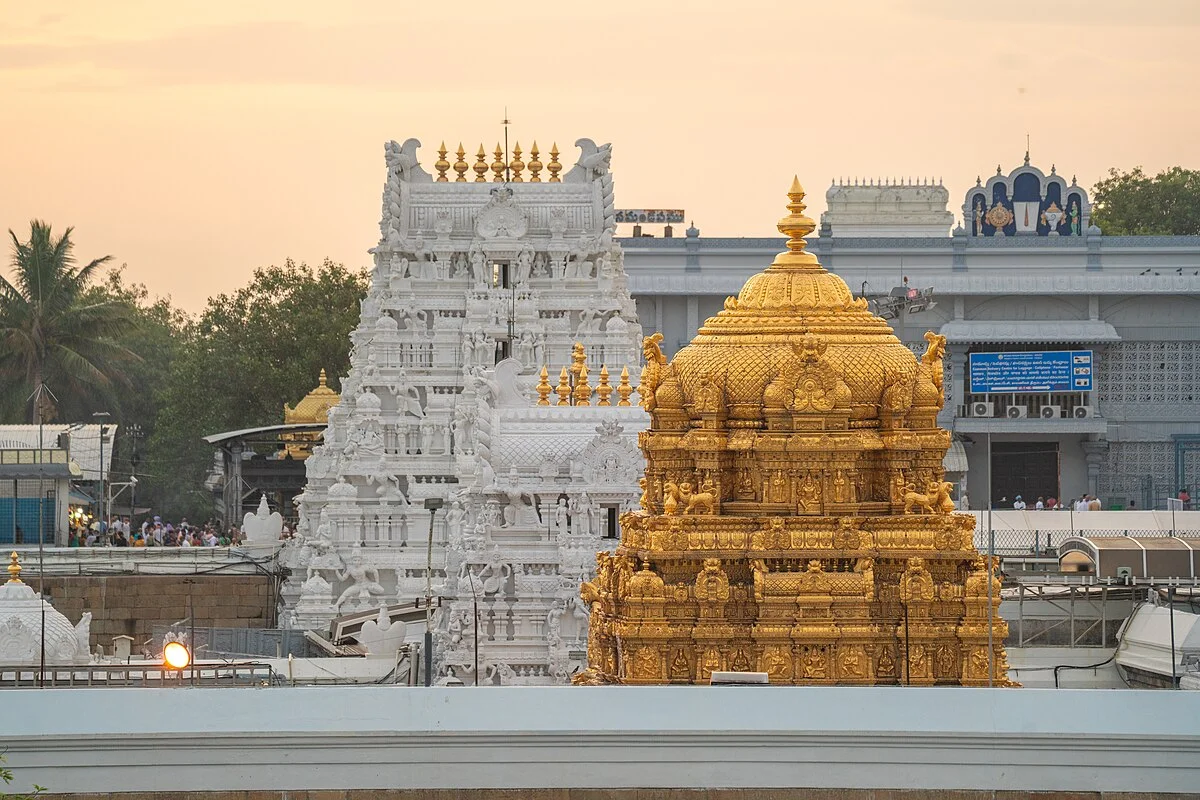
Dravidian Style: The temple’s Dravidian pyramid towers are carved from sandstone and granite, some structures dating to 300 AD. The exact founding date is shrouded in legend, but inscriptions suggest the temple structure took shape between the 12th–13th centuries AD.
Ananda Nilayam: The crown jewel of the temple is the Ananda Nilayam Vimanam, a gold‑plated three-tiered canopy crafted over centuries of donations from kings and rulers.
Pilgrims believe the main idol is self-manifested—not carved by human hands—and miraculously remains ever-moist, unaffected by camphor, oil, or heat.
Despite being carved from stone and placed at a lofty 9,500 ft elevation, it exudes a constant warmth (110 °F), sometimes even sweat, adding to its mystical aura.
The idol also stands at the right corner of the sanctum, although from inside it seems central, a layout that devout insiders like to call “the divine paradox”.
Nearby, the Natural Arch, a Geological Survey-protected natural monument, beckons pilgrims for its serene beauty.
Devotion & Traditions
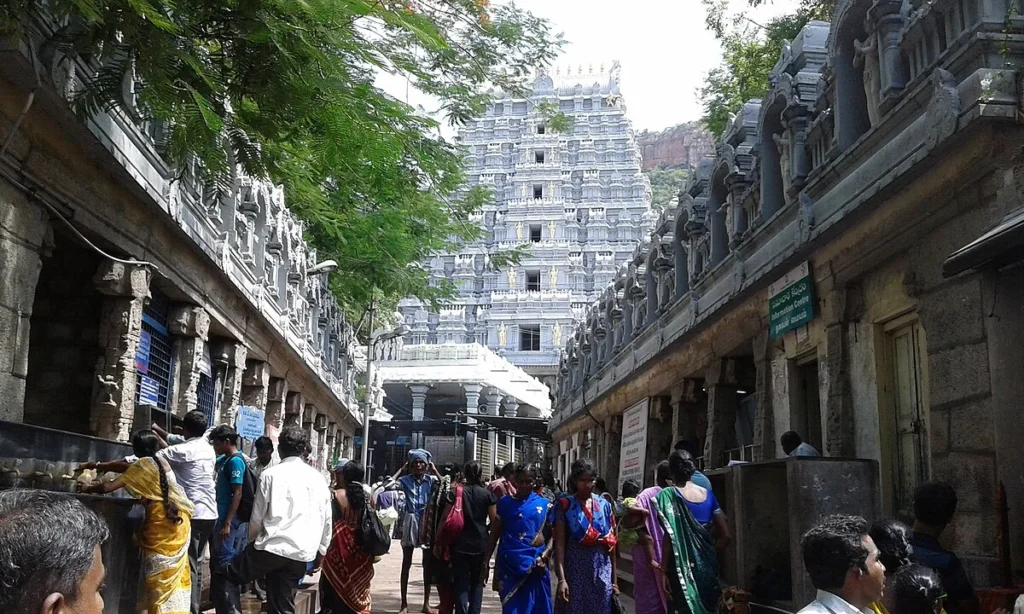
Pilgrimage to Tirupati is a transformational experience and begins at the base at Alipiri Padala Mandapam, a heritage structure dating back 300 years that is currently under restoration.
Pilgrims who choose to climb the 3,550-stair “Alipiri Metlu” path do so barefoot and leave footwear behind as a sacred offering.
The daily ritual schedule is richly layered:
- Suprabhatam Seva begins around 2:30–3:00 am with hymns welcoming the deity.
- Thomala Seva, Archana, Sandhya and Rajabhoga happen throughout the morning.
- Special services like Kalyanotsavam, Vasanthotsavam, Unjal Seva, and Sahasra Deepalankarana continue until night.
At the heart of temple hospitality is Annadanam, a program serving 37,500–40,000 free meals every day, making it one of the world’s largest temple food programs. Meals include rice, vada, pongal, dosa, and Tirupati’s famed GI‑protected laddus, prepared in secrecy by over 600 cooks.
Secrets of the Tirupati Laddu: The Divine Prasadam
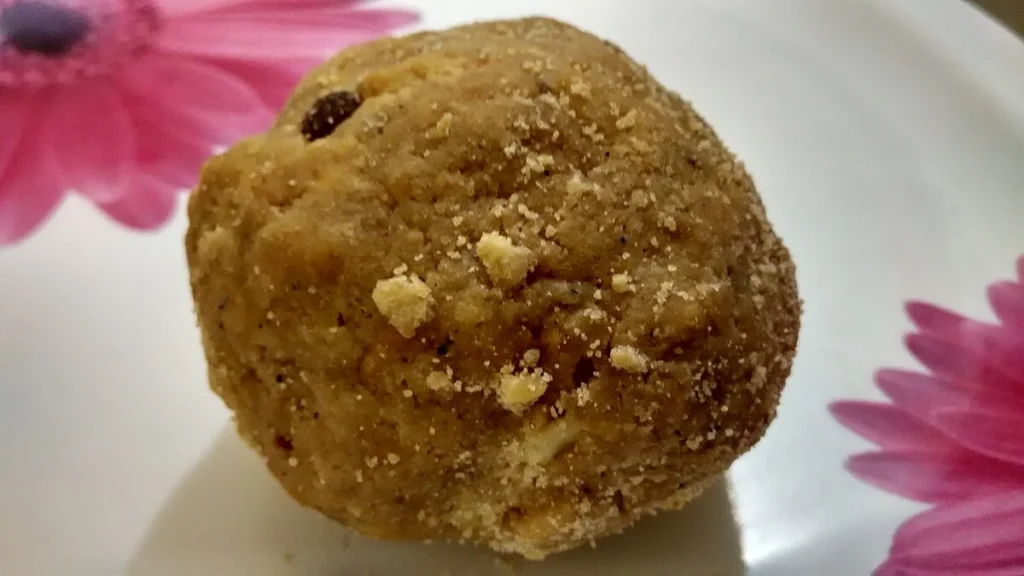
No Tirupati visit is complete without the legendary Tirupati Laddu, a melt-in-your-mouth sweet ball made with devotion and secrecy.
What’s so Special?
- The Tirupati Laddu was granted Geographical Indication (GI) status in 2009, meaning it cannot be made or sold outside the temple complex.
- It’s made fresh daily in massive copper vessels in a sacred kitchen called Potu, right behind the main sanctum.
- Each laddu contains besan (chickpea flour), ghee, sugar, cashews, raisins, and a bit of camphor, but no artificial preservatives.
More than 3 lakh laddus are prepared each day using over:
- 10,000 kg of besan
- 6,000 kg of sugar
- 5,000 litres of pure cow ghee
The process is closely guarded and only TTD staff are allowed in the laddu kitchen. Even the kitchen is considered a temple, shoes are prohibited and ritual purity is maintained strictly.
Many devotees believe one bite of the laddu is equal to a blessing from the Lord himself.
Why Do Devotees Offer Hair at Tirupati Balaji Temple?
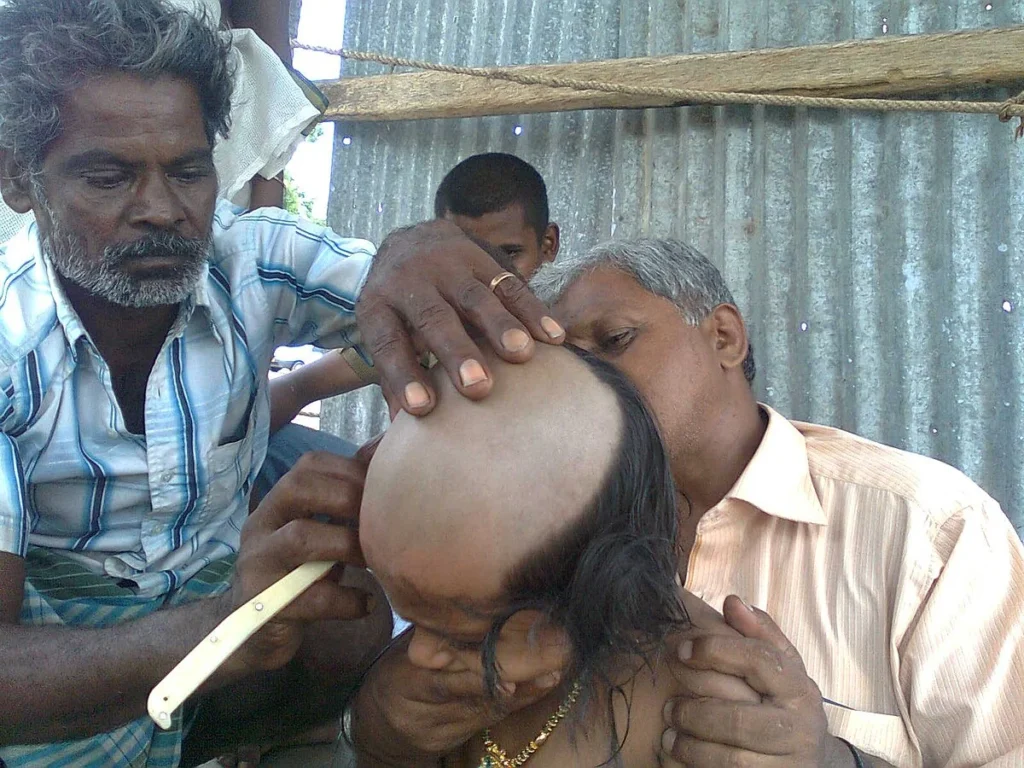
One of the most unique and emotional acts of devotion at Tirupati is the offering of hair, known as mokku. You’ll see infants, children, adults, even entire families waiting their turn to have their heads shaved clean, surrendering vanity and ego to Lord Venkateswara.
But this isn’t just symbolic, there’s a profound mythological story behind this sacred practice.
The Story of Neela Devi’s Hair Offering
According to legend, Lord Vishnu descended to Earth as Lord Venkateswara and settled in Tirumala. During his earthly stay, he was once struck on the head by a shepherd with an axe, causing a wound and a patch of hair loss.
A Gandharva princess named Neela Devi, upon witnessing this, cut off a portion of her own hair and offered it to the Lord to cover the wound.
Deeply moved by her act of love and sacrifice, Lord Venkateswara granted a boon: that all devotees who offer their hair at his temple will be blessed abundantly. The tonsuring became a ritual of surrender, letting go of ego, past karmas, and attachments.
Modern Tonsure Logistics
Today, more than 12 tons of hair are collected monthly in Tirumala across 18 tonsure halls, including the massive Kalyanakatta complex.
Interestingly, this hair, segregated by quality and length; is auctioned internationally, particularly to wig-makers in Europe, China, and the US. Revenue from these sales runs into crores of rupees annually, funding temple operations and social welfare activities.
So, what looks like a humble hair donation at the surface becomes an act of deep surrender and a sustainable revenue source for dharmic welfare.
Hidden Mysteries & Lesser-Known Wonders
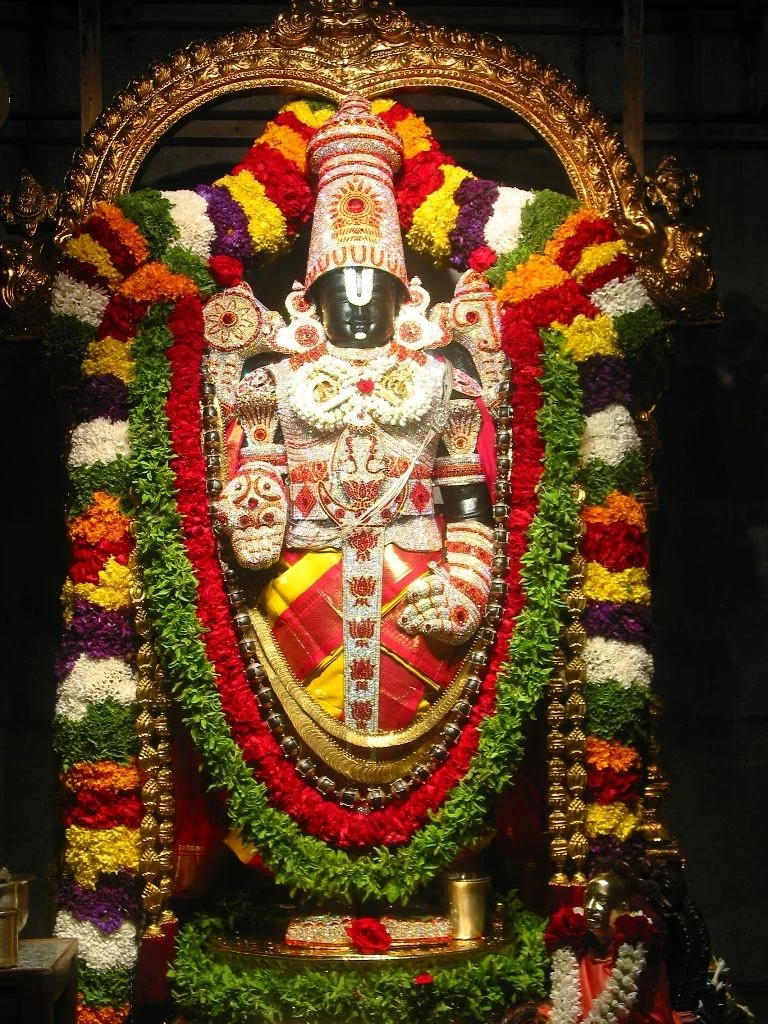
Secret Village Supply
All temple items including flowers, ghee, milk, come from a secret village located 22 km away. Only its residents are allowed inside.
Ever-fresh Flowers
Flowers offered during puja remain fresh even in humid heat.
Mystical Sounds Near the Deity
Many devotees report hearing the sound of waves behind the sanctum wall, even though Tirumala is landlocked. It’s considered a divine echo or manifestation of spiritual resonance.
Lamps That Never Quit
Earthen lamps in the sanctum sanctorum have been burning continuously for decades, perhaps centuries. No one knows their original ignition time, it’s said they reflect eternal devotion.
Idol’s Mystical Moisture & Shadowless Form
Despite being carved from stone, Lord Venkateswara’s idol is naturally warm and sweats, especially after abhishekam. Yet it casts no shadow, even in direct sunlight, a metaphysical marvel documented by devotees.
Hathiram Bhavaji’s Legend: Playing Dice with the Divine
A lesser-known devotee, Hathiram Bhavaji, arrived at Tirumala in the 1500s and is credited with playing dice with Lord Venkateswara in the sanctum. His ashram later managed temple rituals until TTD took over in the 1800s.
Ancient Worship Tradition: Vaikhanasa Archana
TTD follows the Vaikhanasa Shakha of the Yajurveda for daily rituals. Around 50% of pujas include Agni-yagna fire rituals, known as Aaghara Prayoga, which predates many Vaishnava traditions.
Celebrations & Festive Grandeur
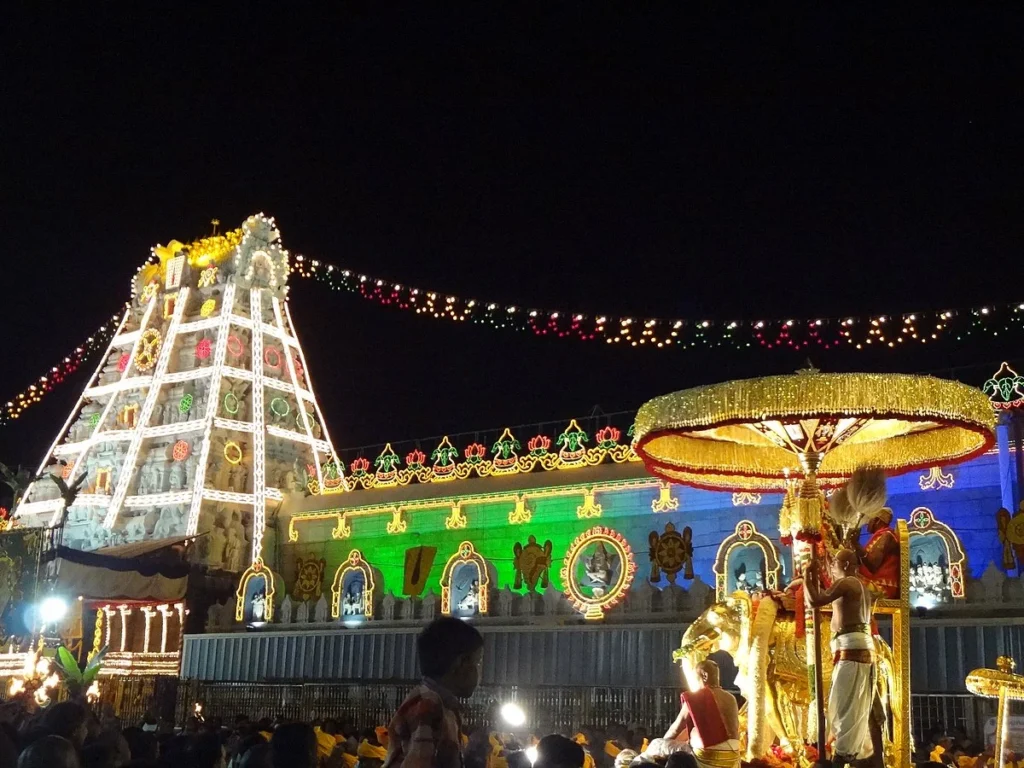
The temple calendar is legendary, with daily rituals and festivals all year round. Some of the most magnificent events include:
- Brahmotsavam, a grand nine-day festival in September–October 2025, featuring daily deity processions on elaborate vahanas like Garuda, Hanumantha, Sesha, and Hamsa.
- Rathasapthami in February, also called the “mini-Brahmotsavam”, with seven‑vahana processions—an experience of unmatched grandeur.
- Vaikuntha Ekadashi (January 10–11, 2025), when devotees enter through the sanctified Vaikunta Dwaram seeking liberation.
- Pushpayagam (Oct 20, 2025) and Teppotsavam (Mar 21–25), where the deity is floated on the sacred temple pond.
- Pavithrotsavam, a three‑day ritual for correcting ceremonial errors, observed in August with deep Vedic recitations.
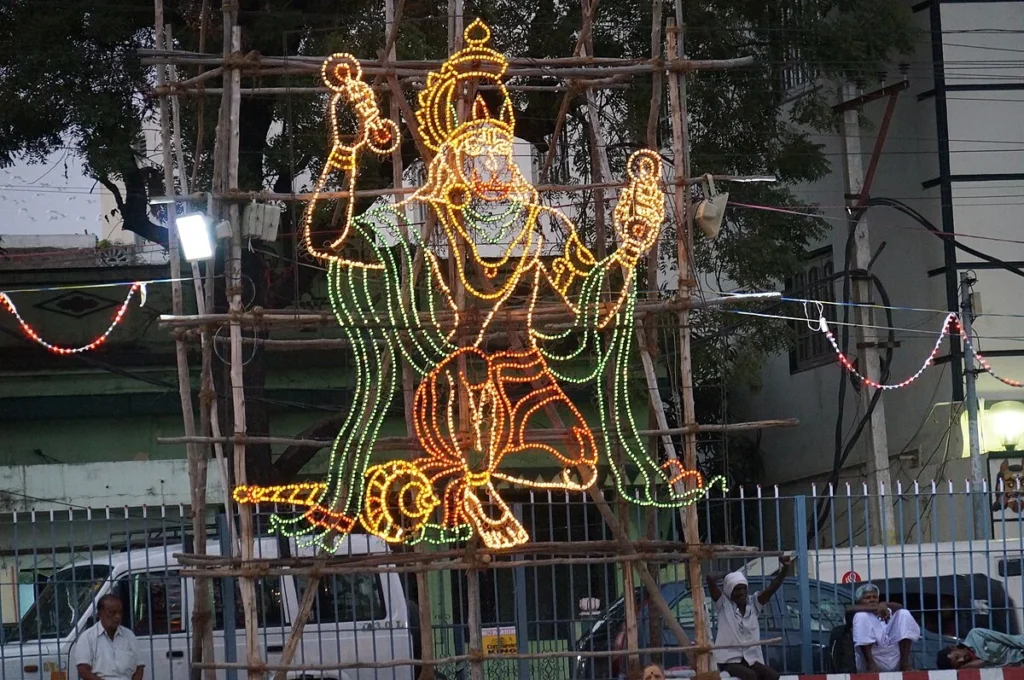
Practical Info: Timings, Dress Code & Etiquette
- Best time to visit: October–March, when the weather in Tirumala is pleasant.
- Dress code:
- Men: Dhoti / pyjama & shirt/kurta
- Women: Saree, half-saree, salwar kameez
- Footwear strictly prohibited inside the temple complex.
- Darshan Timings: VIP darshan begins around 5:00 am, other devotees from 8:30 am till night, closing around 11:30 pm. Friday early morning abhishekam (holy bath) from 5:30 am–6:30 am.
- Do’s & Don’ts:
- Carry ID & booking slips
- Do not carry mobiles/cameras inside
- No smoking, meat, or alcohol allowed
- Respect queue rules and cleanliness
- Plastic-free zone inside the hill city.
How Rich is the Tirupati Balaji Temple?
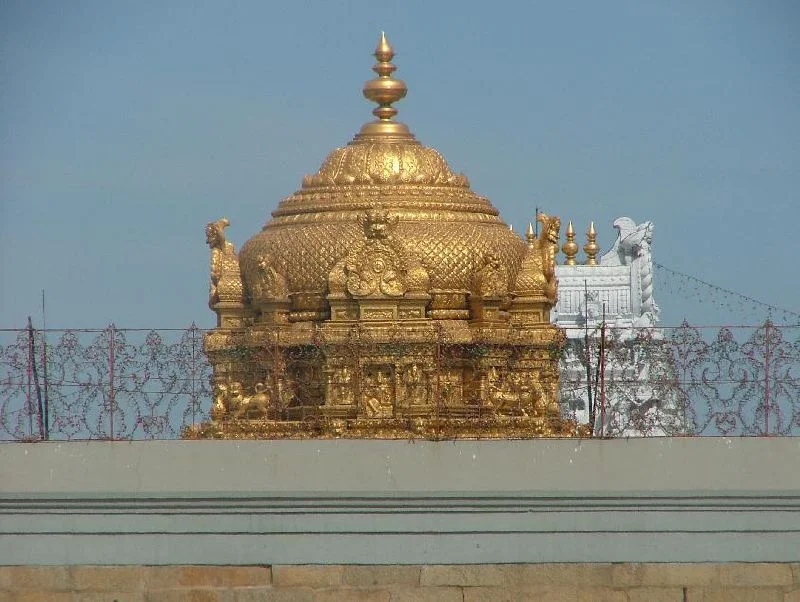
It’s often called the “Vatican of the East”, and for good reason.
According to recent reports from 2024-25:
- Tirumala Tirupati Devasthanams (TTD), the trust managing the temple, has a budget of ₹4,411 crore for 2025.
- The temple has gold reserves exceeding 10 tonnes and fixed deposits of ₹14,000 crore+ in various national banks.
- TTD also receives about ₹1,300–₹1,500 crore per year in cash donations from its famous Hundi (donation box).
This makes Tirupati Balaji not just the richest temple in India, but among the wealthiest religious institutions globally, on par with Vatican’s real estate assets or Mecca’s religious revenue.
But here’s the spiritual twist: every rupee is reinvested into dharma, including free meals, pilgrim facilities, hospitals, Vedic schools, and temple restoration.
New Discoveries & Upcoming Developments
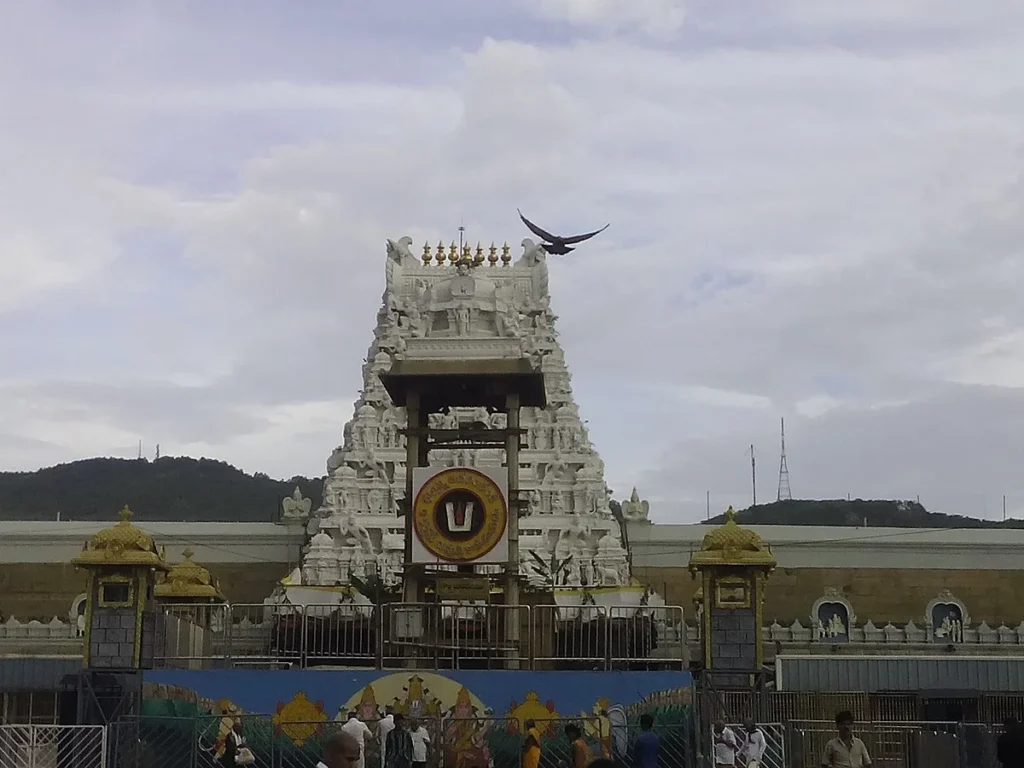
Smart Pilgrim Facilities & Digital Upgrades
TTD is fast transforming Tirumala into a Digital Pilgrim Centre:
- Over 60–70% of services like darshan tickets, donations, laddu orders, and volunteer registrations now go through online platforms developed in partnership with TCS.
- New UPI-enabled kiosks allow devotees to purchase laddu prasadam without queues, they simply scan their phones and pay faster.
- Biometric facial recognition & anti-drone tech are being deployed for better security and crowd management.
- Facial recognition, AI-driven crowd flow, QR-coded darshan tickets, and online donation dashboards are all active in 2025.
- Free Wi-Fi and electric buses for pilgrims, 24×7 emergency clinics, and solar-powered street lighting have been introduced across Tirumala.
Insurance & Crisis Planning
TTD plans to offer free insurance for all pilgrims in 2025, covering accidents, natural events, and emergencies during the pilgrimage, a first among Indian temple trusts, covering everything from accidents to emergencies.
Smart Donation & Queue Kiosks
Pilgrims can now make donations of ₹1–₹99,999 via donation kiosks at Annadhanam halls. This has encouraged more spontaneous giving; over ₹2 lakh was donated within a week of installation alone.
Infrastructure Overhauls
Efforts now focus on renovating old guest buildings and cottages to meet current demand and ease pilgrim accommodation.
Canteen facilities on the hill will be upgraded. Already 10 premium and public canteen slots are under new EoI scheduling.
The temple’s prasadam supply chain is being made robust by constructing an ₹8.13 crore gas storage facility with IOCL partnership to ensure uninterrupted meal service.
Environmental & Social Initiatives
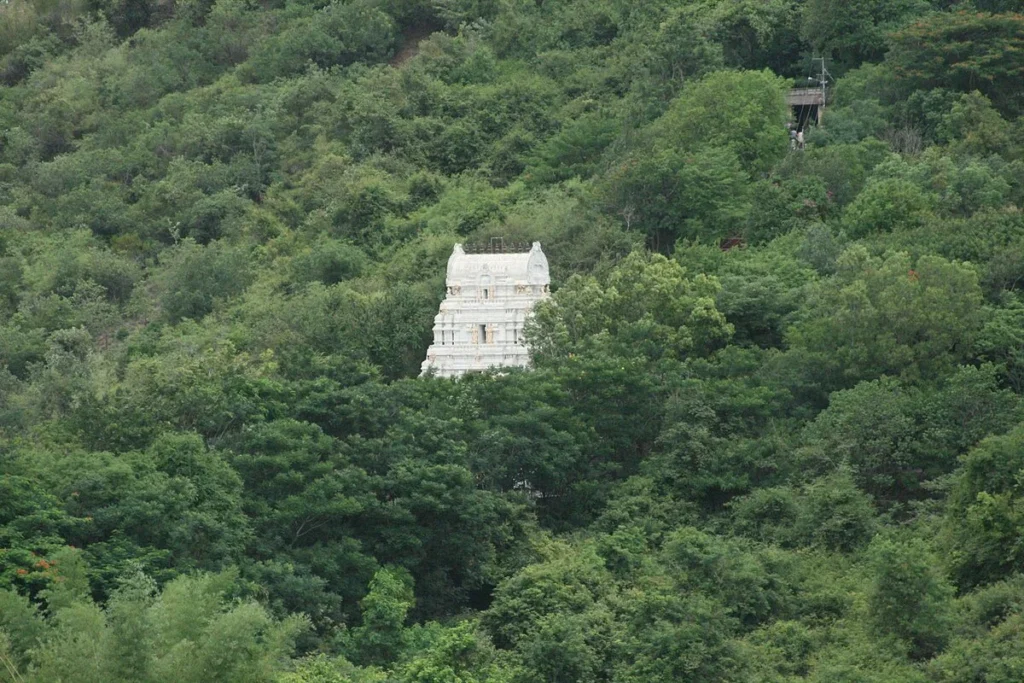
TTD aims to increase the forest cover around Tirumala from 70% to 80%, planting over 2 lakh saplings in collaboration with the state forest department and wildlife experts.
TTD’s Bird Trust received a generous ₹10 lakh donation for its work in rehabilitating physically challenged individuals and improving healthcare services.
Spiritual Fabric: As Devotion Evolves
TTD’s Vision 2047 aims to blend heritage, sustainability, and smart pilgrimage. Projects include:
- AI-driven service optimization
- Zonal master planning for infrastructure around Rambagicha and Balaji bus stands
- Eco-restoration & pollution-free pilgrimage zones including Akashaganga, Papavinasanam areas.
These efforts combine environmental stewardship, sacred legacy, and future-ready pilgrim experiences.
Final Reflection: The Voice of Govinda
Every step on the Tirumala hills is lined with chants of “Govinda! Govinda!”, each echo carrying someone’s hope, pain, gratitude, or prayer.
Whether you’re there as a believer, a seeker, or even a curious traveler, the aura of Lord Venkateswara is impossible to ignore. He’s not just a stone idol.
He’s the epicenter of a billion hopes, a symbol of surrender, and a divine magnet drawing the spiritual heart of India and the world.



